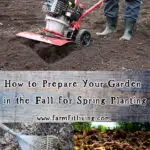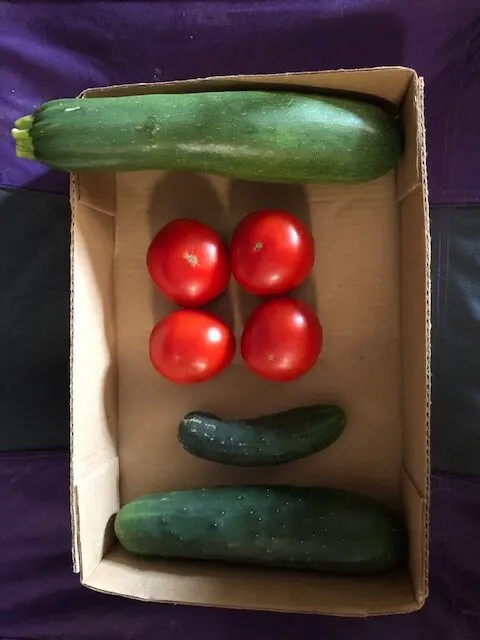Are you wondering why and how to Prepare Your Garden in the Fall.
When you learn how to Prepare Your Garden in the Fall, you’ll be way ahead of schedule and ready to plant seeds and plants in the spring.
Preparations can take longer than expected in the spring. That’s why you should start in the fall. I’m here today to help you know what to do in the Fall to have your garden ready for spring planting.
In this post, I will share:
– How to prepare your garden in the fall.
– Why you should do these 4 simple strategies for prepping your garden soil now.
– Tips for preparing soil in the fall for spring planting.
I know you’re so excited to get started. Let’s dig in!
Listen to the Podcast Episode:
This post contains Affiliate Links. This means if you click and buy, I might make a commission at no cost to you.
See my policy for more information

First of all, Clean Up Your Garden
This is a good idea to do. You want to clean up all of your old plants so that bad insects don’t over winter in them.
Along with plants, clean up any hoses, plastic or cages that may be there. Put them all away in your garden shed for the winter so you’ll know where they are in the spring.
Work the Soil Gently
When your tools are all picked up, it’s time to prepare your soil for spring. The first thing you’re going to do is work the ground.
Use a tiller to work the soil minimally. This will grind up any plants or roots still in the ground. Be sure to till only when the soil is dry. At the end of it, you’ll have a nice fluffy bed.
Finally, you can use a rake to smooth out the bed. When you’re bed is clean, you can start getting it ready for next season with fertilizer. But before you fertilize, you need to soil test.
Soil Test
A simple soil test will tell you everything you need to know about the nutrients needed before you fertilize. Knowing this information can do a number of things for you.
First, it can save you a lot of money. If you plan to fertilize before you know what your soil needs, how in the world are you going to know what to put on. If you fertilize for Nitrogen when your soil doesn’t need Nitrogen, you’ll be spending money on what you don’t need.
A simple soil test costs less than $10 and is the only way you can have any idea of what you need.
Secondly, a soil test is super simple to conduct. I actually have a post all about soil testing and reading the results. Go here to read that post.
Fertilize As Needed
When you get your soil test results back, read them. If you don’t understand them, contact your local Extension service or the soil lab or send them to me and I’ll interpret them for you.
If you had the standard sample done, you’ll likely have results about the pH level and the content of Nitrogen, Phosphorus and Potassium. Your results should say what the level of your soil test was and what the recommended range is.
When you see these results and the recommendations, you should then fertilize as needed. And Fall is the best time to fertilize and give it time to soak in and sit. Read more here about fertilizing garden soil.
Cover Crops
These are crops you can plant in late summer or early fall and let them overwinter in your garden. Cover crops do a number of things for your garden soil.
The first thing it does is act as a ground cover. The soil will be warmer and hold more moisture in if it has a ground cover.
Secondly, a cover crop can act as food for the microbiome in your soil. Having something to eat through the dormant period can really help the earthworms and bacteria in your soil to stay active.
Finally, cover crops can add nutrients into the soil. Certain legumes, such as winter peas can add or fix nitrogen content. There’s a lot of great things to love about cover crops.
Bonus: If you have livestock, cover crops can act as a livestock feed through the Winter.

Ready for Spring Planting
With these 4 tasks for prepping your garden soil for planting, you’ll be ready to head into the garden next spring. Your soil will be the perfect bed for seeds and plants.
And you won’t have to wait for the garden to warm up to work the ground or fertilize. It’ll be all ready to go. There may be some minimal soil work you’ll need to do in the spring, but for the most part, you’ll be ready to go.
I hope these 4 tasks help you for learning how to prepare your garden in the fall for spring planting. Having this done will help you to stress less through the winter and when spring arrives.




